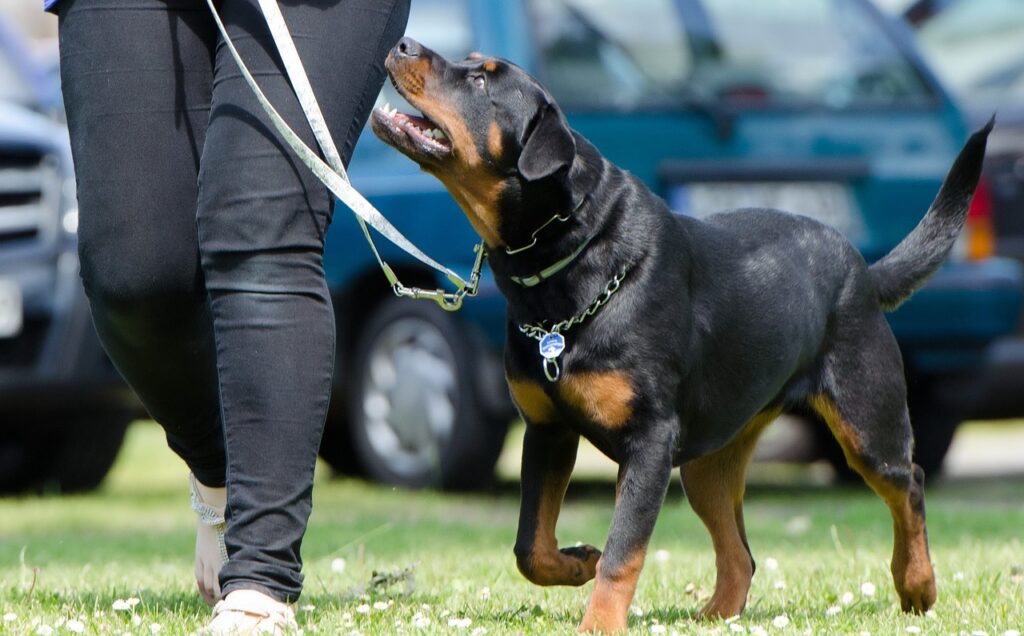What are the 7 basic dog commands? Have you ever dreamed of having an obedient, well-behaved dog who not only listens to you but understands and follows your commands with gusto?
This is not just a whimsical daydream, but a reality within your grasp. The secret? The ‘Magnificent Seven’ of dog commands, that every dog whisperer must know.
Table of Contents
Command 1: Sit
First in the line-up of our fabulous seven is the command, “Sit.” This is the canine equivalent of human preschool – the basics that every pup should know. You might wonder, why “sit”? The command is essential as it establishes your control and initiates obedience training.

Training your dog to sit on command is an essential foundation of any successful dog training program.
Step 1: First, get your dog’s attention and show them that you have a treat in your hand.
Step 2: Hold the treat above your dog’s head, causing them to look up. This position naturally makes them sit.
Step 3: As you lift the treat, clearly say the command “Sit”. Make sure your tone is friendly yet firm.
Step 4: The moment your dog’s bottom touches the ground, reward them with the treat. This associates the act of sitting with the command and reward.
Step 5: Always give them a pat or verbal praise such as “Good sit!” as an extra reward.
Step 6: Repeat this exercise multiple times a day. Short, regular training sessions are more effective than long, infrequent ones.
However, remember, every dog learns at their own pace. If your fur buddy is having trouble sitting, be patient, give them time, and they’ll soon be sitting pretty!
Command 2: Stay
If ‘Sit’ is the first chapter, “Stay” is the essential sequel. This command is a lifesaver, literally. It can prevent your dog from running into dangerous situations.
Here are the steps to train your dog to stay:
Step 1: Begin by getting your dog to sit.
Step 2: With your palm open, facing your dog, say the command “Stay” in a firm and clear voice.
Step 3: Start by moving a few steps back. If your dog remains seated, return to them, say “Good stay!” and give them a treat.
Step 4: Gradually increase the distance you move away from your dog. Also, increase the time you expect your dog to remain in the ‘Stay’ position before rewarding them.
Step 5: Practice this command in various environments so your dog learns to “Stay” regardless of distractions.
What if your dog won’t stay? The trick here is to start small. Start by stepping back only one or two steps before returning and gradually increase the distance. Patience is your best friend here!
Command 3: Down
“Down” is a handy command for moments of over-enthusiasm or when “sit” just won’t cut it. It helps establish boundaries and maintain control.
Here’s how to teach this command:
Step 1: Start with a particularly enticing treat in your hand.
Step 2: Allow your dog to sniff the treat in your hand, then lower your hand to the floor so they follow.
Step 3: Slide your hand along the ground, encouraging your dog to lie down. As they start to follow, clearly say “Down”.
Step 4: The moment your dog is lying down, give them the treat and lots of praise.
Step 5: Repeat this process several times. As your dog becomes more comfortable with the command, start delaying the treat for a few seconds at a time to ensure your dog fully understands the command.
Remember, training should be a positive experience for both of you. If you feel frustrated, take a break and come back to the training later. Your patience and persistence will pay off with a well-behaved companion.
Command 4: Come
The “Come” command is particularly vital in potentially dangerous situations or in public places to ensure your dog doesn’t wander off.
Here’s how to teach your dog this crucial command:
Step 1: Start with a leash attached to your dog’s collar, allowing you a degree of control during training.
Step 2: Kneel or bend down to your dog’s level, and say the command “Come” in a firm but friendly voice.
Step 3: If the dog doesn’t come right away, gently pull the leash towards you.
Step 4: Once your dog comes to you, reward them with a treat and plenty of praise.
Step 5: Practice this in a secure, enclosed area without the leash. Remember to reward them every time they come to you, gradually increasing the distance.
If your dog isn’t taking the bait, don’t despair. Try switching up the treats, and remember to lavish them with praise when they do come to you, reinforcing the behavior.
Command 5: Heel
The “Heel” command is especially helpful for those who take their dogs for regular walks, ensuring the dog walks beside you and not in front of you.
Here’s how to teach your dog to heel:
Step 1: Start with your dog on your left side. Have a treat in your left hand and the leash in your right hand.
Step 2: Say the command “Heel” and start walking. Your dog should be level with your heel.
Step 3: If your dog moves ahead, stop walking. Only start again when they come back to your side.
Step 4: Reward them with a treat and praise whenever they walk beside you on command.
Step 5: Practice this command in different environments with varying distractions to ensure they fully understand the command.
Is your dog still pulling on the leash? Try changing directions frequently. This shows the dog that they must pay attention to you and your movements.
Command 6: Leave it
“Leave it” helps protect dogs when they get curious about things that could be harmful. This command can protect your dog when they show interest in something that could be dangerous.
Here’s how to teach this:
Step 1: Place a treat in both hands. Close one fist with the treat inside and present it to your dog saying, “Leave it.”
Step 2: Let them sniff and lick your fist, but do not open your hand.
Step 3: Once your dog stops trying and pulls away, say “Good leave it,” open your other hand, and give them the treat from there.
Step 4: Practice this a few times daily, increasing the value of the treat in your closed fist.
Not working? Mix up the treats! Dogs sometimes need a little extra motivation to resist the treat in your fist.
Command 7: Paw
And last, but not least, “Paw.” This cute and endearing command is not just a party trick but can help when you need to examine your dog’s paw or clip their nails.
Here’s how you can teach it:
Step 1: Get your dog to sit in front of you.
Step 2: Hold a treat in your hand and present it to your dog but don’t let them take it.
Step 3: As they naturally lift their paw in an attempt to paw the treat, say “Paw.”
Step 4: Immediately give them the treat and lots of praise when they raise their paw.
Step 5: Repeat this process until your dog raises its paw on command.
Does your dog not react to the tickle? Try gently taking their paw in your hand, say “paw,” give the treat and praise. They’ll soon associate the action with the command and reward.
Key Takeaways
- Training a dog involves not just physical commands but mental stimulation and bonding.
- Each dog learns at their own pace and responds differently to commands and rewards.
- The seven basic commands, “sit,” “stay,” “down,” “come,” “heel,” “leave it,” and “paw,” are essential for a well-behaved and safe dog.
Conclusion
Training a dog can be a rollercoaster ride. But when you see your furry friend respond to your commands, all the effort feels worth it.
Consistency, patience, and positive reinforcement are key in successfully training your dog these basic commands. Always remember that each dog learns at their own pace, so it’s important to adjust your expectations and training methods to suit your individual dog.
Happy training!


Dennis and Becca, have always shared a passion for man’s best friend. As dog enthusiasts, they put together articles that inform, engage, and captivate fellow dog lovers.